
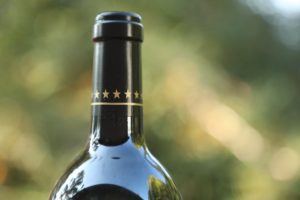
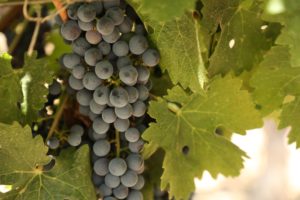 Forman Vineyard was started by long time and well respected Napa Valley vintner Ric Forman in 1983; his first vintage was a 1983 Cabernet Sauvignon which when released was priced at $29.99. Ric grew up in Oakland and later studied at UC Davis in the late 1960s and was part of the era at Davis that produced top local winemakers including Justin Meyer at Silver Oak Cellars and Nils Venge (Groth, Saddleback and others).
Forman Vineyard was started by long time and well respected Napa Valley vintner Ric Forman in 1983; his first vintage was a 1983 Cabernet Sauvignon which when released was priced at $29.99. Ric grew up in Oakland and later studied at UC Davis in the late 1960s and was part of the era at Davis that produced top local winemakers including Justin Meyer at Silver Oak Cellars and Nils Venge (Groth, Saddleback and others).
Ric initially starting working at wineries in Napa Valley including the 1967 harvest at Stony Hill, through a connection to the McCrae’s made by his professor Maynard Amerine followed by the 1968 harvest at Robert Mondavi Winery (only 2 years after that iconic winery was founded). Much later in the early 1980s, he assisted Sonoma County based, Kendall-Jackson by advising the style of Chardonnay that would become so popular for that winery. Early in his career he began working with Peter Newton, the founder of Napa Valley’s Sterling and Newton Vineyards. Ric was the winemaker at Sterling for 10 years, helped designed the winery and also produced the exceptional 1974 Sterling Reserve. After Newton sold Sterling to Coca Cola in 1978 Forman became a partner in and helped design Newton vineyards. He was their winemaker through the 1982 vintage. From 1983 until 1985 he was the winemaker at Merryvale and he also produced some of the early 1980s Charles Shaw Wines.
While at Sterling, Peter sent Ric to France to study some of their wine making techniques, a trip that would truly influence Ric’s career. While there, Ric took copious notes (his original notes and notepads are still on hand at Forman’s tasting room). Ric was a pioneer winemaker in Napa; he introduced a number of techniques to the valley including barrel to barrel racking, one of the first vintage dated Merlots (from the 1969 vintage while at Sterling Vineyards), fermenting Chardonnay to barrel while still sweet (letting the fermentation take place in the barrel rather than in tank) and a number of viticultural practices. His early influences were definitely Bordeaux inspired and today both his viticultural practices and wine making reflect that.
And with a remarkable career that has spanned some 55+ years and left an integral mark in Napa Valley, Ric’s expertise has been invaluable to a number of now well-known and well-established wineries, including providing early advice to Spottswoode Winery to focus on Cabernet Sauvignon, introducing Duckhorn Winery’s co-founder, Dan Duckhorn to the acclaimed Three-Palms Vineyard and to their founding winemaker, Tom Rinaldi, hiring Mike Chelini who was winemaker at Stony Hill for decades, and helping revive and remodeling the old Brun & Chaix Winery on Howell Mountain for its owners at the time, Francis and Françoise DeWavrin-Woltner of Chateau Woltner, now the home of Cade at 13th Vineyard. He also introduced winemaker Ted Lemon (of Littorai) to the Woltners.
Presently Forman produces 2,000 cases of wine annually including about 1,700 cases of Cabernet Sauvignon and 300 cases of Chardonnay. This production is the caseload amount that Ric can physically produce. He used to produce other wines under the Forman label including Merlot. Not only is he the winemaker, but he is also responsible for managing his entire vineyard on the 40 acres that surround his winery. He is a very hands-on winemaker preferring to do even the most mundane wine making tasks himself. His son Toby is the assistant winemaker; Toby also has his own wine brand with his wife Dawn called Tobias Vineyards with most of the production occurring at Dawn’s family winery in Lake County.
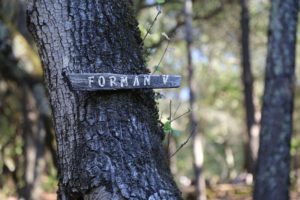

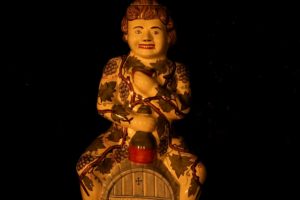 By doing everything himself and producing small quantities he ensures that each bottle of wine is truly handmade. Ric is also a partner in the Rutherford Star Vineyard (source of his Chardonnay) and along with David Abreu helped develop the premium Thorevilos Vineyard located not far from Ric’s own property (now called Ecotone Vineyard). Incidentally, Ric co-founded David Abreu Vineyard Management with Abreu in 1980 and made the Abreu wines on site through the 1999 vintage. Abreu originally planted and farmed the Forman Vineyard
By doing everything himself and producing small quantities he ensures that each bottle of wine is truly handmade. Ric is also a partner in the Rutherford Star Vineyard (source of his Chardonnay) and along with David Abreu helped develop the premium Thorevilos Vineyard located not far from Ric’s own property (now called Ecotone Vineyard). Incidentally, Ric co-founded David Abreu Vineyard Management with Abreu in 1980 and made the Abreu wines on site through the 1999 vintage. Abreu originally planted and farmed the Forman Vineyard
Ric spent significant time looking for the “right” type of property in Napa Valley in the late 1970s. After three years he located and purchased his existing ridge location at the base of Howell Mountain in 1978 off of what is appropriately called Big Rock Road. Some old vines were still growing on site when Ric acquired the property. However, some intense labor was required before the vineyards and the winery could be built. Ric set-off many sticks of dynamite (not all at once) using about 1200 pounds of blasting powder which was needed to plant the vineyard in these extremely rocky soils; the first vines were planted in 1979. Ric planted nearly 9 acres of vines in a vineyard he calls Grande Roche, meaning big rock in French at an elevation of approximately 650 feet.
Napa Valley wine cave pioneer Alf Burtelson (a general engineering contractor who founded his company in 1964) drilled the 6,000 square foot Forman cave. The cave spoils were composed of sand, gravel and rounded small alluvial rocks. Noted geologist Dr. David Howell visited the property and told Ric these alluvial deposits were somewhere between 3 to 4 million years in age. Alf is well into his 80s now and long since retired although is still living in the northern part of Napa Valley. Incidentally, Alf’s first cave job in Napa Valley was in 1972, to repair the original Beringer caves which his company did successfully; this eventually led to more work for Beringer, including drilling new caves.
There is no shortage of rocks on the property; plenty of these stones line parts of the edges of the vineyard and the winery was built from rocks removed from the vineyards.
Villa Remi Winery
Before the current winery was built in 1985, Ric wanted to produce the wines in the cellar of the old Villa Remi (Chabot) Winery, built in 1881 – where he was living at the time. But this never came to fruition. This old structure was severely damaged in the 2020 Glass Fire.
The vineyard is separated into three blocks, each at a slightly different elevation. The vines grow on an ancient up lifted riverbed so there are plenty of rocks, but despite this, the soil itself is rather deep and well drained including both river gravel and decomposed volcanic tufa. The vines are planted very close to each other on non-terraced hillsides. During bud break its easy to see the different varietal blocks within the vineyard based on the differences in each varieties’ growth patterns. Having walked through several blocks we can say that these vineyards are immaculate – each vine is carefully managed multiple times throughout the year.
While Ric used to make Merlot from the site, today Forman focuses on merely two wines each vintage, a primary only (no malolactic) fermented Chablis style Chardonnay from a vineyard Ric used to own in Rutherford and a Bordeaux styled red blend. Due to the high demand for the Chardonnay, it is often sold out although may selectively be found in the valley including at Oakville Wine Merchant in Oakville. The red blend is made from grapes grown on site including Cabernet Sauvignon, Cabernet Franc, Merlot and Petit Verdot.
Harvest is always done by hand with the processing of the grapes starting almost immediately as the winery is located within a short drive from any of the vines on the property. The red wines are all fermented in small steel tanks; the small size helps ensure quality control. The red blend is typically aged in 60-80% new French oak. Blends are decided upon soon after fermentation. The winery is located directly above the cave with a stainless steel pipe running vertically from the winery into the cave. When filling barrels, the transfer of wine from the winery into the cave is remarkably fast, in about 2.5 minutes per barrel.
A pleasing characteristic about Forman’s wines are their balance and approachability in their youth but with all the characteristics to age extremely well with the proper cellaring. And these are balanced wines even at alcohols approaching 15%. For reference the early Forman red wines (depending on vintage) were up to 3% alcohol lower than the current releases. The wines have earned numerous accolades from wine writers and press over the years and have even been served at the White House. During the Clinton presidency, the Forman 1995 Chardonnay was served on February 22, 1998 at a dinner honoring the governors of the states and territories. Incidentally, Forman was misspelled as Foreman on the official White House menu.
Select Wines
Chardonnay

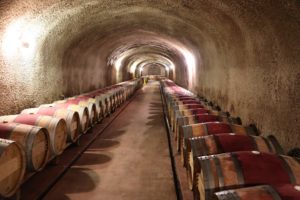
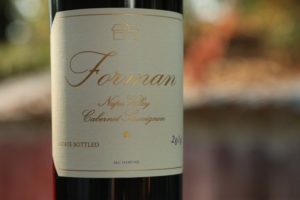 The 2023 Forman Napa Valley Chardonnay is medium to deep gold in color; fully ripe at its listed 13.1% alcohol, the bouquet is a pure expression of California sunshine with aromas of golden apples, baked pineapple, Alphonso mango at the peak of ripeness, apricot, peaches in light syrup, butterscotch, creme brule, melting butter, hazelnut and dried walnut husk. Ric extracts so much from this variety in terms of its aromatic diversity and intensity. In a blind tasting, from aromatics alone, we probably would have guessed the alcohol at least a percent higher. Superbly poised between flavor, texture and acidity, this wine tastes like baked apples, pineapple, apricot, yellow nectarines, golden mangoes, ripe papaya and yellow peaches. Finishes with layers of fruit, a fleshy and supple texture and bright but balanced acidity. This wine was whole cluster pressed and fermented in 100% Burgundy barrels, of which 30% of which were new. Its élevage was on the gross lees for 7 months; it did not go through malolactic fermentation. Beautiful.
The 2023 Forman Napa Valley Chardonnay is medium to deep gold in color; fully ripe at its listed 13.1% alcohol, the bouquet is a pure expression of California sunshine with aromas of golden apples, baked pineapple, Alphonso mango at the peak of ripeness, apricot, peaches in light syrup, butterscotch, creme brule, melting butter, hazelnut and dried walnut husk. Ric extracts so much from this variety in terms of its aromatic diversity and intensity. In a blind tasting, from aromatics alone, we probably would have guessed the alcohol at least a percent higher. Superbly poised between flavor, texture and acidity, this wine tastes like baked apples, pineapple, apricot, yellow nectarines, golden mangoes, ripe papaya and yellow peaches. Finishes with layers of fruit, a fleshy and supple texture and bright but balanced acidity. This wine was whole cluster pressed and fermented in 100% Burgundy barrels, of which 30% of which were new. Its élevage was on the gross lees for 7 months; it did not go through malolactic fermentation. Beautiful.
The 2020 Forman Napa Valley Chardonnay (sourced from the Star Vineyard in Rutherford) is medium gold color in the glass; offer aromas of honeysuckle and honeycomb along with warm butter, vanilla bean and notes of toffee and caramel. The aromatics are also tropical showing mango and pineapple. This wine features a creamy almost briny mouth feel across the palate with flavors of Golden Delicious apple, yellow pineapple and mandarin. There is some oak spice on the palate but it’s not overt. What brings this wine to life is not only the intense flavors and pleasing texture, but also the bright acidity and mineral laden finish which persists for some time. This wine was whole cluster pressed to Burgundian barrels. After fermentation, this wine was aged in older barrels for 9 months of which 7 months were on the lees; it was only racked once prior to bottling.
Cabernet Sauvignon
The 2020 Forman Napa Valley Cabernet Sauvignon is a blend of 75% Cabernet Sauvignon, 11% Merlot, 7% Cabernet Franc and 7% Petit Verdot. This wine was aged for 22 months in 65% new French oak, of which 35% were in once used Bordeaux barrels. It is deep ruby in color; the bouquet is an ever-evolving aromatic display of depth. Initially if offers a gamey almost sweaty leather nuance and opens to notes of violets, rose petals and red plum. It also offers a hint of dried herbs and a cigar/dried tobacco note. We noted the pleasing tension across the palate between flavor, acidity and structure. This wine offers flavors of plum, blackberry, dark cherry and licorice. This wine’s texture is lightly creamy with grainy but already well-integrated tannins for such a youthful wine. Medium bodied. We sampled this bottling 3 years post vintage. This wine finishes with bright acidity and a darker lingering savory character. This is going to be an extremely age worthy bottling.
Incidentally, the 2019 Forman Napa Valley Cabernet Sauvignon was Our 2019 Forman Vineyard Cabernet was awarded as the “Wine of the Year” by wine writer Karen MacNeil.
The 2018 Forman Napa Valley Cabernet Sauvignon is a blend of 76% Cabernet Sauvignon, 15% Cabernet Franc, 6% Petite Verdot and 3% Merlot and was aged in 60% new and 40% once used Bordeaux barrels. This wine is deep ruby in color; the bouquet is primarily red-fruited offering aromas of cherries, plums and currants along a note of mint. There are also some darker savory characteristics present including a woodsy spice, crushed peppercorn, a light note of sweaty baseball mitt leather and pipe tobacco. Bright, fresh and vibrant across the palate, this wine delivers flavors of red cherry, plum, currant and toasted cedar, which is more noticeable on the finish. The tannins are grainy, but rounded and well integrated. They continue to persist with a light dryness along with the lasting fruit. Some of the savory characters on the bouquet are also mirrored on the palate. After tasting this wine, we immediately wrote balanced to describe its cadence across the palate.
The 2017 Forman Napa Valley Cabernet Sauvignon is a blend of 78% Cabernet Sauvignon, 12% Cabernet Franc, 6% Petite Verdot and 4% Merlot. This wine is deep ruby in color; the bouquet reveals aromas of dark raspberry, crushed rocks with a light dusty nuance, cherry and blueberries. The aromatics are highly appealing on this particular bottling. This wine is balanced from the attack through the savory finish. It offers flavors of bramble, raspberry and tobacco. The finish lingers with both persistent tannins, fruit and a light dryness; it is juicy and long lasting. This wine was aged for 22 months in 70% new and 30% once used Bordeaux barrels.
The 2006 Forman Napa Valley Cabernet Sauvignon we tried had just been released about a week before and while very young it already showed a beautiful elegance and structure. The bouquet is fruit forward with a noticeably earth-driven terroir character present both as aromas and on the palate. Hints of dust, gravel and mocha develop, adding additional nuances to the fruit aromas as the wine opens up. The palate is balanced and offers pretty spices but it’s really all about the fruit and the mouth feel – featuring a noticeable suppleness and balance from start to finish. The finish is long, slightly smoky with structured, ripe and fine-grained tannins.
—
Rossi-Wallace
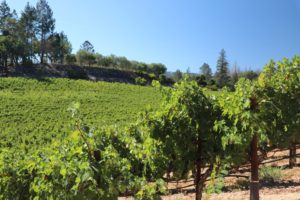 Ric is a partner with his wife Cheryl Emmolo in Rossi-Wallace, limited production wines which are sold entirely through distribution instead of direct to consumer. Wines from a number of varieties have been produced over the years including from Napa Valley and outside of Napa Valley grown grapes: Pinot Noir, Grenache, Barbera, Zinfandel and Riesling. The wines are made at Forman Vineyards.
Ric is a partner with his wife Cheryl Emmolo in Rossi-Wallace, limited production wines which are sold entirely through distribution instead of direct to consumer. Wines from a number of varieties have been produced over the years including from Napa Valley and outside of Napa Valley grown grapes: Pinot Noir, Grenache, Barbera, Zinfandel and Riesling. The wines are made at Forman Vineyards.
Cheryl has a long heritage in Napa Valley; her grandfather Salvatore Emmolo founded Emmolo Nursery in St. Helena, later operated by her father Frank Emmolo. This nursery was one of the go to rootstock suppliers for Napa Valley based wineries for decades.
In 1994 she began her own wine brand, Emmolo Sauvignon Blanc; we first tasted this many years ago when Cheryl was pouring this at a tasting in San Francisco. Twenty years after founding this label Cheryl passed the brand to her daughter, Jenny and it is one of the labels under the Caymus Wagner Family of Wines (Cheryl used to be married to Chuck Wagner). Rossi-Wallace is named in tribute of the mothers of both Cheryl (Annie Rossi) and Ric (Roz Wallace).
The 2022 Rossi-Wallace Grenache is from a Caymus Winery owned vineyard in Solano County. This wine is pale pink/purple in color; the bouquet is highly aromatic and fruity with scents of red cherry and pomegranate along with an herbal note including bay leaf and dried herbs. This is a soft, affordable and easy drinking wine with plenty of flavor, focused on its varietal character rather than additional cellar inputs. Its texture is lightly creamy with flavors of pomegranate and cherry cola. The tannins sport a very light grainy feel along with a subtle note of anise.
And Ric produces a second label as part of Rossi-Wallace called Chateau la Grande Roche. For more information visit: www.rossi-wallace.com
—
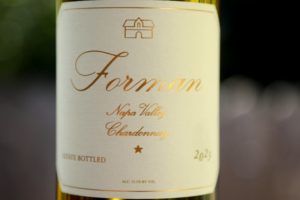
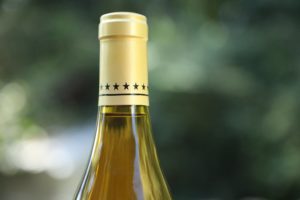
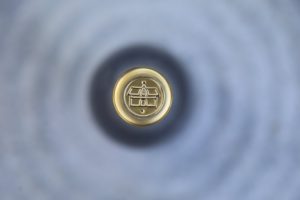 Visits to Forman Vineyard are strictly by appointment and are for serious wine enthusiasts and collectors. While priced accordingly for the high quality and hands on work that goes into making these wines, they are certainly not priced like some of the regional ‘cult’ wines.
Visits to Forman Vineyard are strictly by appointment and are for serious wine enthusiasts and collectors. While priced accordingly for the high quality and hands on work that goes into making these wines, they are certainly not priced like some of the regional ‘cult’ wines.
Visits are private and unscripted with tastings either at their wine bar or at a table in their tasting room; allow at least 90 minutes. The RF (République Française) sign hanging on one of the walls was purchased by Ric at an antique shop in St. Helena. Worth thumbing through is the Forman history book containing numerous newspaper articles and clippings highlighting the Forman wines over the past decades.
Tastings include current release bottlings of their Chardonnay and Cabernet Sauvignon and a slightly older vintage of their Cabernet Sauvignon. Ric is almost always on site, often riding through his property on an ATV and often will stop by to say hi to visitors. Visits include a walk through the old cave and a stop in Ric’s personal cellar (one of the rooms within the cave).
Most of the Forman production of is distributed directly through their mailing list. Locally however, they do have limited distribution and are found in a number of restaurants in Napa Valley as well as several wine shops including the Oakville Grocery. In additional they have limited distribution overseas including in parts of Europe and Asia.
For more information, to join the Forman mailing list or to schedule a tasting, visit: www.formanvineyard.com
Vineyards
Tasting Room/Cave
Winery






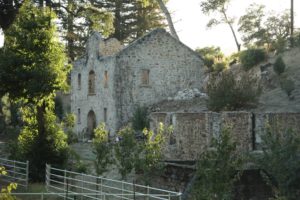
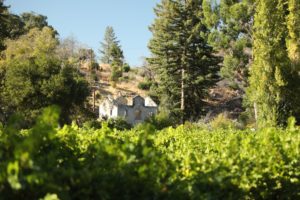
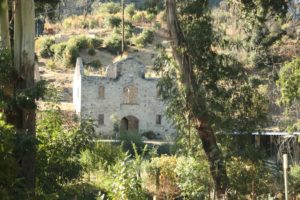
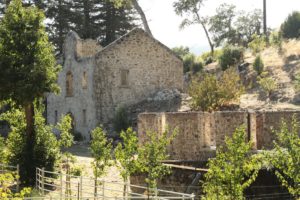
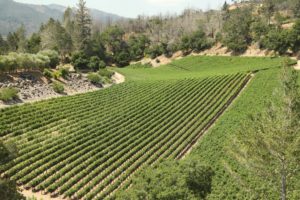
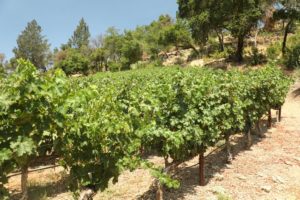
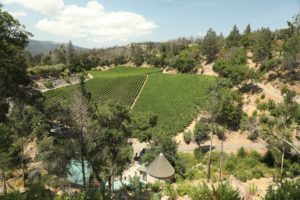
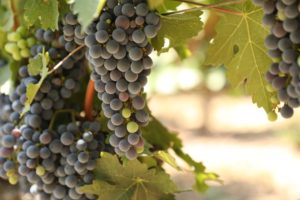
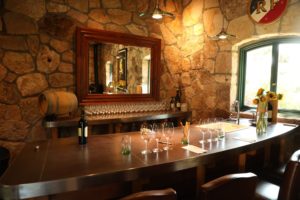
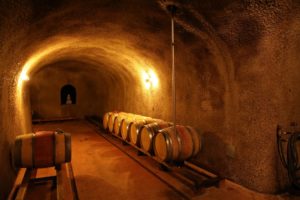
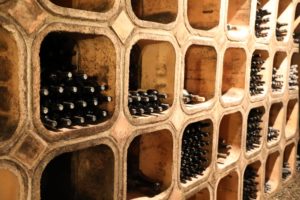
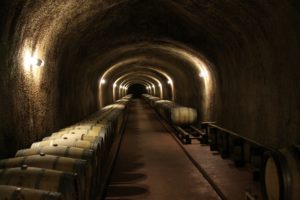
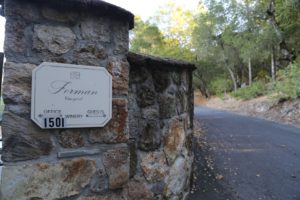
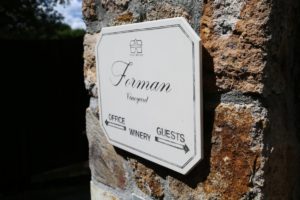
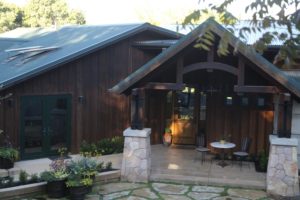
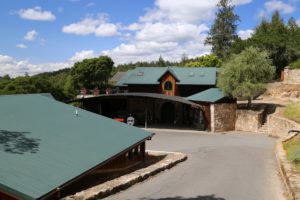
Leave a Reply